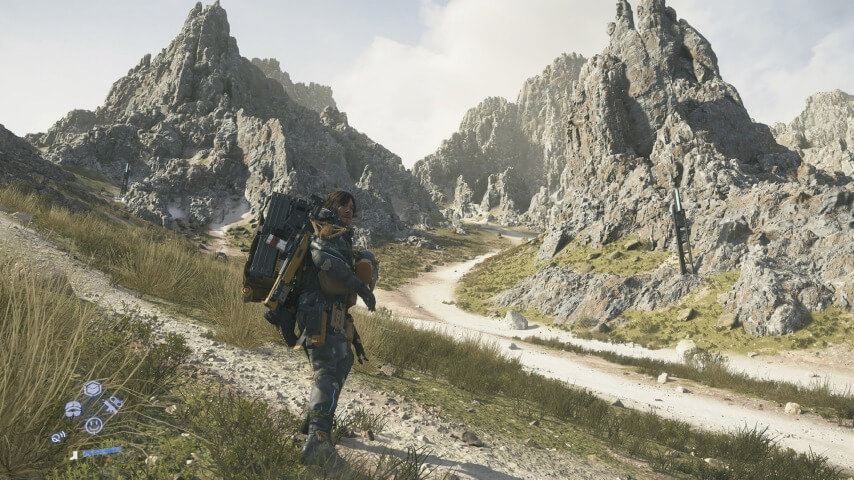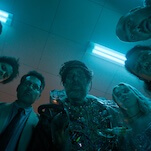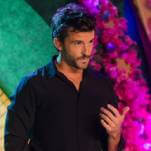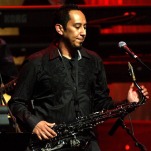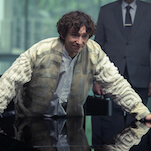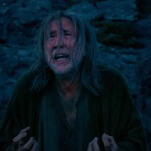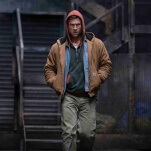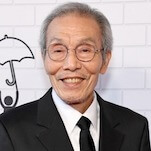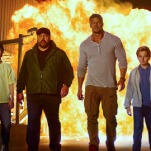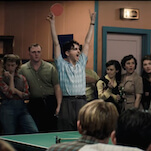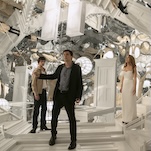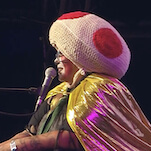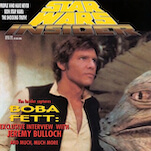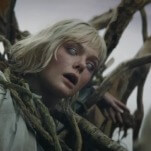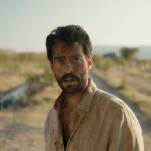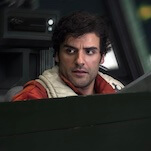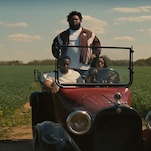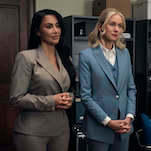As I toss the tiny, sentient ventriloquist dummy I keep on my belt—voiced, of course, by TV’s Jesus Christ—high into the air, so that he can spy on a camp of armed murderers I’m going to end up stealth-defeating by throwing a bunch of heavy rubber pizzas at their heads, I find myself asking: Is subtlety in video games overrated?
This moment brought to you by about 50 hours with Kojima Productions’ Death Stranding 2: On The Beach. (Of which, I need to emphatically state, this is not a review—I’m closing in on the ending, I think, but not in a way that leaves me feeling equipped to tackle in their fullness all the toys and hidden cat turds lurking in this massive sandbox of a game.) I try to remind myself, pretty frequently, that a massive team of people worked on this title, contributing ideas to it, refining and perfecting those parts of it that are refined and perfect. (Which are, essentially, all those bits that contribute to its core gameplay loop, where Sad Norman Reedus delivers packages to isolated weirdos in a deeply hostile Australia, who then gift him with an ever-expanding array of wonderful, beautiful toys.) It’s tricky, though, because few creators in video games are more primed to carry the myth of the auteur than Death Stranding‘s director, producer, designer, and co-writer, Hideo Kojima. Not just because the Metal Gear creator is a shameless self-promoter and celebrity name-dropper, although he absolutely is, but because his games are shot through with so many idiosyncratic choices that, the imagination desperately demands, if there were anyone else in their productions with the authority to call shots or say no, they almost certainly would.
Take, for instance, Death Stranding‘s continued obsession with casting well-known directors as the physical models (but not the voices) of many of its most prominent characters. Nicolas Winding Refn and Guillermo Del Toro are both “back” from the first game, of course, but they’ve now been joined by George Miller (as a crusty sea captain who navigates your mobile base of operations, and who’s voiced by Marty Rhone), and, in the most bizarre choice of all, The Edge Of Heaven director Fatih Akin, who’s the physical basis for Dollman, the aforementioned ventriloquist dummy that accompanies Sad Norman Reedus everywhere he goes across a broken and isolated Australia. Does this obsession with surrounding the almost pathologically passive SNR with men known for choosing and creating their own individual worlds mean anything to Death Stranding 2‘s story of connection, corruption, and grief? Or does it just mean that Hideo Kojima likes these directors and thought of a fun way to use his video game to make friends with them? It’s not just that I don’t know: It’s that I’m not sure Kojima could explicitly tell me, either. It feels like a deliberately unexamined back-of-brain impulse, but one that’s then had millions of dollars thrown at it to be realized. (See also the game’s subtitle: Is there a reason it deliberately namechecks another very famous story about mid-apocalypse Australia, or does Kojima just like the rhyme?)
And the thing is, I’m completely susceptible to the charm of so much of this. The weirdness of it all, the “Had an idea, refused to think about it, just tossed it in” vibe, can be massively enervating. The first time I summoned a giant tar monster to fight another giant tar monster (spoiler: this game has Lovecraftian kaiju Pokémon fights) and heard the soundtrack introduce an old-school Godzilla-style musical sting, I laughed out loud. There’s an unavoidable part of me that thinks it’s kind of cool that this is a video game where a barefoot waif with time powers can kick the ass of a robot version of the Joker who plays guitar solos on his sci-fi flamethrower. (I only just clocked that that’s probably another Miller homage, by the way.) Asking the player to do random spatial reasoning puzzles before they can go out on missions; encouraging you to wear a hat with the game studio’s own logo on it; giving you the option to listen to eighth-grade-level book reports on such astoundingly on-the-nose works as Frankenstein and Moby Dick: It all sits at an intersection of naivete and confidence that gets me more often than not.
All of it, though, butts up unavoidably against Kojima’s worse impulses as a writer. (And as a writer of dialogue, I’d argue that he genuinely is the pits: Death Stranding 2‘s scripts are insanely repetitive, saying in whole paragraphs what a few words could more interestingly convey.) “Fuck it, throw it in” is a fascinating trait for a game designer to have, and it serves On The Beach extremely well in its play. But it’s way less charming from a writer, as the game hurls whole buckets of spaghetti at the wall to see if anything meaningful about death or life emerges. I feel things while playing it, certainly, partly because it’d hard not to when Kojima and his team are painting in such obvious primary colors, and partly because it’s a well-acted game, underneath the pervading sense that you’re playing your way through the “COOL HOLLYWOOD FRIENDS!!!” folder of Kojima’s contacts list. (If I have to hear Léa Seydoux sleepwalk through one more line about how “We really rely on you, Sam. Your hard work is appreciated,” though, I’m going to lose my goddamn mind.) Some of the time, I can almost see where Kojima and his co-writers think this approach is a benefit: It’s possible to build a powerful and affecting narrative—especially one centered on fundamental unknowables like death—out of unprocessed subconscious brain slime, trusting that meaning will bubble up out of the mire once the whole thing’s been taken in and digested. But that doesn’t nullify the importance of craft, or of reading back through your script and ensuring that every line actually has a point for being there. And Death Stranding 2 almost never does that work. These are the places where subtlety and restraint aren’t just roadblocks or second-guessing, but vital tools in the construction of a story that other human beings can connect with. Their lack harms the story Kojima and his collaborators are telling here, over and over again.
Again: Not a review—just some musings and impressions after a few weeks with this massive, bizarre, often excellent game. I’m going to keep playing Death Stranding 2 through to the end, partly because I genuinely want to know where its story is going. (I might quibble with the artless way it’s being told, but the macro tale, of a world where the dead are constantly trying to reach out and devour the living, remains a genuinely cool sci-fi setting.) And mostly, because I find the play itself genuinely fun. I spent whole evenings just setting up networks of ziplines across the game’s mountains, trying to overcome the basic, invigorating, frustrating challenges of trekking over snow-covered peaks to make my deliveries. I’ve stared at its maps, trying to figure out the perfect route to avoid both rough terrain and rising waters. I’ve thrilled at approaching an enemy base and trying to figure out how to dismantle it without bringing the hordes down on my head. (There’s a lot more Metal Gear Solid 5 in this one, by the way, for those who are hurting for that particular flavor of open-world infiltration action.) Most of all, I want to see what new surprises it still has in store for me: What weird, dopey, completely unsubtle ideas it’ll chuck at my head like so much synthetic pizza dough. Death Stranding 2 lacks restraint in ways that genuinely, fundamentally harm it as a work of art; it also lacks it in ways that make it one of the most fun games I’ve gotten lost in this year.
